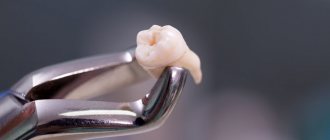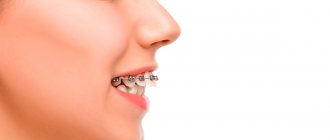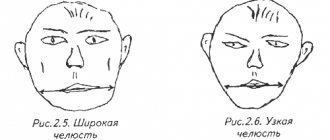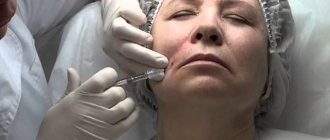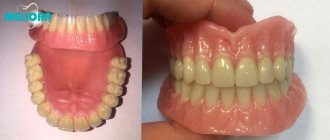Author Peter Deryabin
03/29/2004 08:44 (Updated: 09/19/2021 13:47)
Health » Dentistry » Prevention
The story is told by Gennady Vladimirovich BANCHENKO, Doctor of Medical Sciences, Professor of the Central Research Institute of Dentistry in Moscow .
Signs that make it easy to determine a person’s character by their teeth
Shape of teeth
says a lot about a person, and you can determine
the type of person by his teeth
by paying attention to the following signs of the dentition:
Upper incisors
| People with long incisors They are usually the life of the party, but at the same time they persistently strive for their goals and are quite open in communicating with others. Large incisors most often occur in adamant, stubborn people who persistently pursue their goal. Despite their difficult nature, those with large teeth are distinguished by their sincerity. Large gap between teeth betrays the explosive nature of their owner. In addition, the hole indicates an addiction to risk, which is not always justified. |
Fangs
It is generally accepted that large, sharp teeth
, including fangs, speak of a person’s aggressiveness. In fact, this is not always the case. In most cases, such teeth reveal a loving person. They can also talk about determination.
For example, if a woman’s upper canines are large and long
, then this can emphasize her kindness and humor.
Evenness of teeth
| A person's character can be determined by the curvature or straightness of their teeth. Ideal dentition speaks of a balanced, calm character. Such people are not afraid to make decisions and take responsibility. They are eloquent, self-confident and ready to go towards their goal no matter what. Uneven teeth speaks of the good intuition of the owner of the teeth. |
A person’s small, fox-like teeth can also tell about a person’s character.
— owners of such dentition are often characterized by lust.
Protruding teeth
characteristic of stingy people.
Teeth size
Strong large teeth
testify to a person’s courage, strength and kindness. Such people are most often long-livers.
| They will tell you what character the girl has and small teeth - often their owners are quite secretive and reserved natures. They have a small number of friends. Often people around them simply do not understand them, considering them strange. What do sparse teeth a person does not need to think for long - such teeth indicate people with a wild imagination, who always have a fresh, interesting idea in their heads: they can often even be considered strange. They are also distinguished by their tenacity of character and always go towards their goal. |
Small teeth
, among other things, can talk about greed. Such people have a hard time parting with money and are certainly not ready to spend it on others, be it relatives or friends.
Presence of damage
The presence of damage to the dentition can also indicate the character of a person
So, if
the upper row of teeth is damaged
, this will indicate difficulties in unlocking your potential, and if there are
problems in the lower part (especially in the left)
, you should think about problems in family relationships.
How to improve your facial profile or The dependence of facial aesthetics on the position of your teeth
All patients who consult an orthodontist know how the position of teeth determines the aesthetics of a smile, but many do not even suspect that the position of the teeth also determines the profile of the face.
To understand how orthodontic treatment affects changes in facial profile, let's look at the types of profiles.
Types of Face Profiles
- Straight
- Convex
- Concave
Orthodontists usually use a conditional “profile line”
. This is the line that runs through the most prominent point of the chin and upper/lower lip. The relationship of this line to the nose is assessed.
Racial characteristics must be taken into account here.
Fine:
- for representatives of the Caucasian race, the profile line should pass through the middle of the nose
- in representatives of the Mongoloid race this line touches the tip of the nose
- in representatives of the Negroid race it does not reach the tip of the nose
How to determine your profile type at home?
Take a long ruler and place it edge-on to your chin. Maintaining contact at this point, bring the ruler closer to your face until it touches one of your lips (you may have to tilt the ruler slightly away from your nose to do this). Ask someone to take a photo (or take a selfie) of you in profile.
Rate the profile based on your photo:
- Does the ruler go through the middle of the nose? You have a harmonious/straight profile.
- Does the ruler touch the tip or not even reach your nose? You have a convex profile type.
- Does the ruler go through the base of the nose or does it extend onto the face? You are the owner of a concave profile.
Of course, it is worth making allowances for individual characteristics, such as the shape and size of the nose, lips, and, as already mentioned, race.
Possibilities of orthodontic treatment in improving facial profile.
As a rule, each type of profile corresponds to a certain type of bite and a certain position of the teeth.
And if there are no questions with the direct/harmonious type of profile, then malocclusions corresponding to (or rather, being the cause of) the 2nd and 3rd types - convex and concave - require special consideration.
Cause of convex profile
There may be types of bite in which:
1. The lateral teeth close correctly, while the front teeth protrude strongly forward.
Typically, this position of the teeth is corrected by removing the teeth behind the canines and “pushing” the front teeth into the vacant spaces:
| Before | After |
| Before | After |
2. The lower jaw is behind the upper jaw more than normal / the lower jaw is too small
During orthodontic treatment, the lower jaw “comes forward” and the profile improves:
| Before | After |
Concave profile
, as a rule, is a consequence of a bite in which the lower jaw is “in front” of the upper jaw.
Orthodontic treatment helps to cope with the following situation:
| Before | After |
There are cases when it is impossible to cope with orthodontic methods alone, and then orthognathic surgery comes to the rescue:
| Before | After |
The benefits of orthodontics go far beyond just a beautiful smile. Change for the better! We can help you with this.
What is transmitted genetically
Most diseases of the dental system are not 100% genetically dependent. However, there are signs that are passed on from generation to generation and can ultimately affect the condition of the teeth. These include:
- composition, thickness and shade of enamel;
- shape of dental units;
- bite geometry;
- timing of the eruption of primary and permanent teeth;
- composition of saliva and oral microflora.
Along with these characteristics, the child also inherits a predisposition to certain pathologies. But there is no fatality in this. With a reasonable, competent attitude to oral care, you can avoid the development of one or another disease, the likelihood of which is genetically predetermined.
The importance of prevention
The child subconsciously adopts the behavior and habits of his parents. If older family members do not brush their teeth, eat improperly, or do not exercise, then dental diseases lie in wait for both adults and children. At the same time, the incorrect conclusion is often made that “bad teeth are inherited.”
Mineralization of dental tissue continues after teething. Any disease, weakened immune system, or unbalanced diet have a much greater impact on the hard tissues of teeth than hereditary predisposition.
Parents should monitor the health of their children by providing them with proper care and disease prevention. This will help avoid dental caries and the development of enamel hypoplasia, and reduce the risk of abnormal bite.
In case of poor heredity, timely prevention plays a key role. Regular dental care will reduce the risk of developing dental and periodontal disease in children. The specialists of the Shifa clinic are always ready to help. Our dentists regularly improve their professionalism, conduct diagnostics and treatment using modern equipment. This allows you to identify possible risks and prevent them in a timely manner. Contact professionals to ensure your child’s teeth are always strong and healthy!
Enamel
Its thickness, composition and even shade also depend on genetic characteristics. They affect not only the external attractiveness of teeth, but also their health. Normally, the thickness of the enamel should be in the range of 1.6-1.7 mm on the chewing surface.
If the actual parameters are smaller, this is fraught with premature abrasion for the enamel, and the appearance of caries for the teeth. Those who naturally have thin enamel with a bluish tint should not despair. With the help of remineralization and lamination procedures, various types of dental onlays (crowns, veneers, lumineers) you can easily compensate for this moment.
Baby teeth can “tell” about a child’s future
Every parent wants his heir to grow up handsome, rich and in good health. To understand what kind of future awaits the child, adults paid attention to the condition of his baby teeth.
It was believed that if they erupt for a long time and painfully, the child will grow up angry and scandalous. In principle, this superstition has a completely logical justification. After all, from the first months of life, a baby does not give others peace. This means that it is likely that he will behave even worse in the future.
Novosibirsk coronavirus vaccine EpiVacCorona will be tested on children
Tuna is a source of protein, but you shouldn’t eat it often: healthy food can be dangerous
Yogurt and other foods that are not suitable for snacking: they will increase hunger
And if a baby’s teeth appear very late, the child will grow up talented, successful and rich. If you believe this superstition, parents should not buy nibblers for their children. Babies do not need toys that stimulate teething. The later they appear, the richer and more successful the heir will be. After all, fate must somehow compensate him for this developmental defect. It’s a pity that such a sign is nothing more than a myth.
The relationship between teeth and internal organs
- By any, even the most insignificant tooth decay, you can determine which organ is not in order. By the upper and lower incisors (1-2), for example, the condition is judged:
- kidney
- Bladder
- ears.
Fangs (3) are “responsible” for the liver and gall bladder, molars (4-7) for:
- stomach
- spleen
- lungs
and the so-called wisdom teeth can tell about the condition of the heart and small intestine.
— Is it possible to determine by the nature of tooth damage which organ is sick and what exactly is sick?
- Yes. Let's take, for example, pulpitis. This is the most unpleasant dental disease. It is this that makes people want to “climb the wall” - this pain is so unbearable.
Pulpitis, in essence, is inflammation of the dental nerve. If you look at which tooth is affected by pulpitis, and then determine the corresponding organ using the diagram, you can make a preliminary diagnosis - gastritis, colitis, cholecystitis.
caries has become a very “popular” disease recently . If you have discovered this disease in yourself, you can easily find out which organ needs treatment: the diagram indicates the liver - you most likely have hepatitis, the stomach - gastritis or an ulcer, and if the decayed tooth correlates with the ears, then it may develop otitis media.
In general, toothache is a kind of signaling about problems in the human body. Love your teeth.
Necessary prevention
Beyond heredity, preventative measures to maintain dental health are everyone’s first priority. No matter how smooth and snow-white the teeth are, insufficient hygienic care leads to tooth loss.
When teeth are forming in the womb, the following are likely to occur:
- hypoplasia (underdevelopment) of enamel;
- hyperplasia (excessive formation) of enamel;
- fluorosis (intoxication with fluoride salts);
- drug-induced tissue development disorders;
- hereditary disorders.
These pathologies are predetermined, because the lifestyle of a pregnant woman leads to their appearance. In all other cases, preventive measures and hygiene will keep teeth healthy, even with bad hereditary factors.
Bite correction: has it always been welcomed?
Today, many people turn to orthodontists to get rid of gaps between their front teeth. But in ancient times people were in no hurry to do this. This feature was considered a sign of happiness and prosperity. However, modern doctors, on the contrary, convince patients to correct this defect. Otherwise, the gap will begin to cause physical discomfort, which is by no means associated with a prosperous life.
Goat invasion: residents of a British resort tolerate mountain animals (photo)
The iconic role of “Kolyan’s mother”: Marina Fedunkiv spoke about her creative plans
Things with animal print - trend 2021: what should be in the wardrobe
At what age should correction begin?
Orthodontic correction can begin at the age of 6-8 years, but at this time only removable appliances such as plates are used. Braces can be installed only after all permanent teeth have erupted. This process is usually completed by age 14. Today, you can also correct your bite using clear aligners. They are used from 16-18 years of age. It is important here that the teenager understands the importance of treatment and is motivated to complete it, aware of the importance of what is happening. Since the aligners are easy to remove, parents need to be sure that the child is actually wearing them for the required amount of time. Otherwise, it will be impossible to achieve a positive result.
Correcting overbite with braces in adults
Many people are concerned about the question: can teeth straighten themselves? As already mentioned, the process of jaw transformation ends at the age of 14 years. Teeth can also shift when third molars (wisdom teeth) erupt, which usually occurs between the ages of 18 and 25. However, in such a situation one cannot expect positive changes. In the future, the position of the teeth does not change.
For such serious disorders as progenia, prognathia, and significant crowding of teeth, treatment with a permanent brace system is indicated. Today, patients have the opportunity to choose a system made of metal, synthetic sapphire, and ceramics. The products are characterized by high aesthetics, are suitable for long-term treatment and allow you to achieve expressive aesthetic results.
How to straighten your front teeth
Aligners are best suited for straightening frontal teeth. They allow for easy rotation, extrusion, intrusion and tooth movement. They can also help eliminate crowding. To do this, teeth are separated - a small amount of enamel is removed in the proximal area (between the teeth). Due to the freed up space, the teeth are moved. Separation is a safe and painless procedure. Activators help speed up the alignment process - small composite “dots” that the doctor forms on the surface of the teeth. They serve as additional support for the system, but at the same time do not interfere with the aesthetics of the smile.
Periods of teeth eruption and loss
Normally, the replacement of baby teeth with molars begins at 5-6 years of age. It happens that indicators vary depending on individual characteristics. A year or two in both directions, as a rule, is not considered a deviation. It's just heredity. How long teeth will serve the owner is also largely determined by genetic factors, but not only by them.
Unlike teething, the speed of which is almost impossible to influence, the longevity of natural teeth depends on us. A nutritious diet, regular hygiene (both at home and professional), and timely visits (at least once every six months) to the dentist will help preserve your teeth for a long time.
Composition of saliva
When parents complain about bad teeth, they often do not realize that the cause may be the composition of saliva, which determines heredity. It may vary in the ratio of mineral and organic components. And this has a direct impact on dental health.
With a reduced content of oligosaccharides in saliva, the population of microorganisms increases, which settle on the surface of the enamel, creating a predisposition to caries. To avoid this disease, you need to brush your teeth at least twice a day and use special mouthwashes.
An increase in the concentration of class A immunoglobulins (IgA) in saliva, which have an antibacterial effect, protects the enamel from cariogenic bacteria.
The specialists of the Shifa clinic will help you choose toothpaste and other hygiene products to create the right environment in the oral cavity. Dentists will also give recommendations on diets that reduce the negative effects of saliva.

